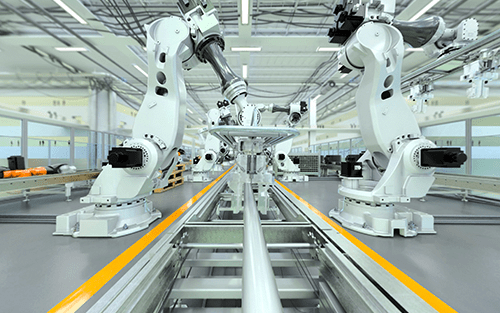Revolutionizing manufacturing and healthcare.

Imagine a world where you can create intricate objects with just a click of a button. A world where the boundaries between digital designs and physical reality blur seamlessly. Welcome to the realm of 3D printing—a groundbreaking technology that is not just changing how we manufacture products but also revolutionizing healthcare in ways we never thought possible.
From crafting complex machine parts to producing customized medical implants, the 3D printing process is reshaping industries and paving the way for innovations that were once confined to our imaginations. Join us as we explore this fascinating journey through history, applications, benefits, challenges, and future possibilities of 3D printing!
What is 3D Printing and How Does it Work?
3D printing, also known as additive manufacturing, transforms digital designs into tangible objects layer by layer. It starts with a 3D model created using computer-aided design (CAD) software. This virtual blueprint is then sliced into thin horizontal layers by slicing software.
The process begins when a printer deposits material—commonly plastic or metal—following the precise instructions from the sliced file. These materials are heated and extruded through a nozzle, gradually building up each layer until the final object takes shape.
Different technologies power 3D printing, including Fused Deposition Modeling (FDM) and Stereolithography (SLA). Each has its unique strengths suited for various applications.
What sets this technology apart is its ability to create complex geometries that traditional methods struggle to achieve. As it develops further, possibilities expand across industries like manufacturing and healthcare.

The History and Evolution of 3D Printing
3D printing has a rich history that dates back to the early 1980s. It all began with Chuck Hull, who invented stereolithography. This groundbreaking technique allowed for the creation of solid objects from digital models using ultraviolet light.
As technology advanced, various methods emerged. Fused deposition modeling (FDM), developed in the late ’80s, became popular for its simplicity and cost-effectiveness.
The 1990s saw further innovations with selective laser sintering (SLS) and binder jetting techniques entering the scene. These advancements expanded applications beyond prototyping into production-level manufacturing.
Fast-forward to today, and 3D printing is at the forefront of numerous industries worldwide. With materials ranging from plastics to metals and even biological substances, it’s not just about creating prototypes anymore; it’s reshaping how we think about design and production altogether.

Applications of 3D Printing in Manufacturing
3D printing has become a game-changer in the manufacturing sector. Its ability to create intricate designs at a fraction of traditional costs is remarkable.
Manufacturers are using this technology for rapid prototyping. They can produce functional prototypes quickly, allowing for faster iterations and improvements before going into full-scale production.
Additionally, customization is a key advantage. Companies can tailor products to meet specific needs without extensive retooling or modifications.
Parts on demand also reduce inventory costs. With 3D printing, businesses can print components as needed, minimizing waste and storage space.
Industries ranging from automotive to aerospace have embraced this innovation. The flexibility it offers enables them to push boundaries and innovate like never before.
As companies continue exploring its potential, we’re likely to see even more creative applications emerge that reshape how goods are manufactured globally.

Advancements in 3D Printing for Healthcare
The realm of healthcare is witnessing groundbreaking advancements through 3D printing technology. This innovation allows for the creation of patient-specific medical devices, enhancing the quality of care.
Custom prosthetics and orthotics are now tailored to fit individual patients perfectly. This level of personalization improves comfort and functionality significantly.
Moreover, bioprinting is taking center stage. Researchers are developing living tissues that could one day replace damaged organs. Imagine a future where organ transplants become obsolete due to customized tissue solutions!
Surgical planning has also benefited immensely from this technology. Surgeons can print precise models of complex anatomy beforehand, leading to improved outcomes during procedures.
Additionally, pharmaceutical applications have emerged with 3D printed medications providing controlled dosages for better patient management. The possibilities seem endless as health practitioners embrace this revolutionary process in their practice.

Benefits of 3D Printing in Manufacturing and Healthcare Industries
3D printing offers unparalleled flexibility in manufacturing. This technology allows for the creation of complex designs that traditional methods struggle to achieve. The ability to rapidly prototype saves time and reduces costs, streamlining production processes.
In healthcare, 3D printing is a game changer. Custom prosthetics and implants can be tailored specifically to individual patients, enhancing comfort and effectiveness. Surgeons benefit from patient-specific models for pre-operative planning, improving surgical outcomes.
Another advantage is sustainability. Reduced material waste during the printing process makes it an eco-friendly option compared to conventional manufacturing techniques.
On-demand production minimizes inventory needs as items can be printed as required rather than stockpiled. These innovations are leading industries toward greater efficiency while meeting unique consumer demands more effectively than ever before.

Challenges and Limitations of 3D Printing
Despite its impressive capabilities, 3D printing faces notable challenges. One significant hurdle is the material limitation. Not all materials are suitable for every 3D printer, restricting options for creators and manufacturers.
Another issue lies in production speed. While additive manufacturing is often lauded for efficiency, large-scale production can be slower than traditional methods like injection molding. This can hinder rapid market response times.
Cost also plays a role; high-quality printers and materials can be expensive upfront investments. Smaller companies might struggle to justify these costs against potential returns.
Regulatory hurdles in sectors like healthcare complicate adoption. The need for rigorous testing and compliance with standards adds time and complexity before new products can reach the market, slowing innovation significantly.

Future Possibilities for the 3D Printing Industry
The future of the 3D printing industry is brimming with potential. As technology advances, we might see an expansion into new materials, including bio-inks for tissue engineering and sustainable options like recycled plastics.
Imagine a world where entire buildings are printed on-site, reducing waste and construction time significantly. This concept is already gaining traction in urban development projects.
In healthcare, personalized medicine could take center stage. Custom implants and prosthetics tailored to individual anatomy may soon become routine rather than exceptional.
Moreover, advancements in speed and precision will likely make 3D printing accessible to smaller businesses and start-ups. This democratization could lead to innovative products that cater to niche markets.
As industries explore automation combined with 3D printing techniques, the landscape of manufacturing itself stands poised for transformation. The integration of AI can further enhance design capabilities while optimizing production processes.

Conclusion
The 3D printing process is undeniably transforming both the manufacturing and healthcare sectors. By allowing for rapid prototyping, personalized products, and complex designs that were once unimaginable, this technology is setting new standards. As industries continue to embrace these advancements, we can expect a revolution in how goods are produced and how medical solutions are developed.
With its myriad applications—from creating intricate machinery components to producing custom prosthetics—3D printing offers unprecedented flexibility. Moreover, the benefits extend beyond efficiency; it fosters innovation that could lead to breakthroughs in design and functionality.
Although challenges remain—such as material limitations and regulatory hurdles—the potential of 3D printing cannot be understated. The future holds exciting possibilities where enhanced techniques may overcome current barriers, enabling even broader adoption across different fields.
As we move forward into an era defined by smart technologies and sustainable practices, one thing is certain: 3D printing will play a crucial role in shaping our world for years to come.






